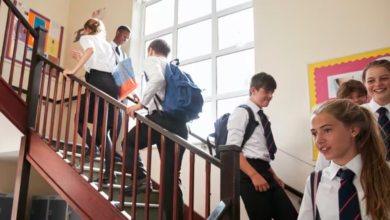Amplify learning with video-assisted classrooms
How do you use video content in your classroom?

A video-assisted learning (VAL) approach can drive competency across the board but requires some strategy.
Read our full print magazine issue for Term 1, where this article originally featured, here.
Schools that benefit from VAL enable teachers to use video directly in the classroom. Teachers now have greater access to free and paid video content than ever before, with educational videos and digital video libraries a readily available resource to facilitate learning.
Making video for the classroom is easier than ever too, and teachers wondering how to integrate instructional video into their lesson plans should check in with their nearest school or local librarian, who is likely already doing this to show students how to operate their digital library resources.
Video can be used in the physical classroom—whether teachers screen a full feature or documentary as part of an English or History unit, show brief clips introducing a topic or play choice videos to help students task switch between subjects or activities. This can be particularly helpful for neurodiverse students who often struggle to transition between activities. Video is a flexible, useful tool that schools can use in a variety of ways inside the classroom to complement existing curricula.
Here are some VAL considerations:
Classroom design
It is important to weigh up how videos can be used effectively and how your classroom functions. If you are using a flipped classroom model, then videos may not actually be played in-class but instead, they’ll be played at home.
In hybrid classrooms, where the need for a combination of face-to-face and distance learning models exists, VAL can be useful in bridging the divides and bringing physically separate students together. Consider seating and classroom layout—your teaching space is set up for small groups, video played on small devices may function better than a single large screen.
Devices set the stage
Simple video-assisted learning is easy to integrate with a monitor display, a computer, TV, projector or even just a smartphone to begin with. The technology is out there to raise the bar higher, of course, depending on classroom needs, learner preferences, and budget.
Smart projectors, interactive displays, touch screens, surround sound and immersive tech will give your classroom the VAL edge. Virtual and augmented reality are classroom realities available to make video really come alive! Tech suppliers can often provide initial (or even ongoing) training, helpful for teachers and teacher aides.
When should it be used?
One of the best times to introduce VAL is to engage students in a new topic of learning, or to provide background before the learning objective is shared. Conversely, it can be a powerful cementing tool to bring together strands of learning once an objective has reached its conclusion. Inviting students to share video presentations on projects or topics works across most learning areas, and video can also be integrated as a tool for self-reflection.
In this way, there are few subjects that cannot benefit from VAL. Even the most practical of subjects, such as hard tech, physical education, visual or performance art, can benefit from the power of well-chosen video footage—allowing students to record themselves and critically reflect to improve their own performances, or submit and share time-lapse videos as part of their assessment in food technology or wood work, all help to develop new skills across a plethora of industries. Screen record is another useful feature for learning—teachers can record a short instructional video for students rather than having to spend half a lesson showing each individually.
Engaging students in at home learning can often be aided with the use of VAL, as can creating an inclusive classroom that accommodates different paces of learning, without the need for teacher repetition or delay.
Used creatively within a well-structured pedagogy, VAL can create some of the most memorable classroom moments for your students, facilitating an elevated learning experience.










